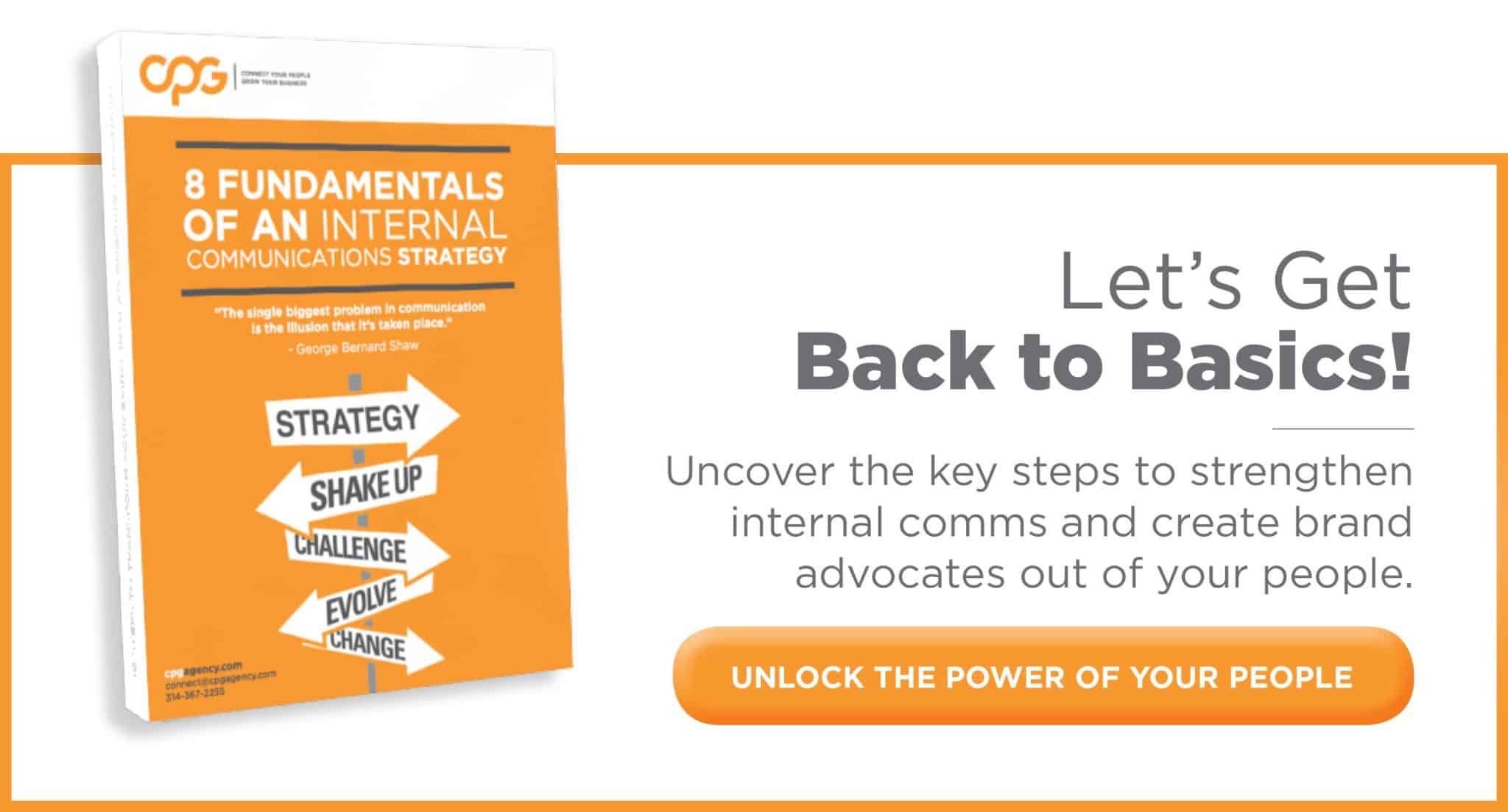Download Our eBook: 8 Fundamentals of an Internal Communications Strategy
If your people are sending out the “whatever” vibes, it’s time to get back to the basics. Make sure your internal communication strategy is following 8 fundamentals to cultivate an engaged workforce aligned with your company’s success.
2 Ways to Emotionally Connect with Your Employees:
1. Start an Internal Communications Strategy
What better way to start tapping into the hearts and minds of you employees than to create a new level of transparency and communication? By utilizing corporate engagement solutions, you invite your team to be a part of the vision, values and objectives of your business approach.
Through various touchpoints, including social, email, in-office gatherings, etc., you offer real insights and strategic thinking that involves the employees and rewards their input. This new line of collaboration amongst team members not only serves as a catalyst for innovation, but it helps identify purpose.
The Aberdeen Group identified a 26% increase in annual revenue for companies that implement an employee engagement program.
This internal engagement strategy becomes the driving force behind all culture communication and also plays an essential role in the pre-, during and post communication efforts of your big event.
2. Create a Live Experience
It’s time to bring your people together in a meaningful way. An event, meeting or conference is the most effective way to cascade your brand message from leadership all the way down to the frontline employees.
Getting everyone in the same room helps get everyone on the same page.
Start Shaping the Attendee Roadmap
In order to drive the most value from your corporate event planning, you must consider the attendee journey. This is the roadmap that determines the level and mode of engagement that your event’s attendees will experience. By focusing on your attendees and providing experiential, innovative experiences, you can transform them into brand advocates.
Plus, the ROI is impressive. According to Event Marketing Institute, 74% of event attendees have a more positive outlook on their company after a major event. This fosters their emotional connection to your brand.
Live experiences and internal communication strategies are two important features of every company to help build trust and alignment with your team. By tapping into the emotional and engaging moments that help connect your people, you’ll nurture the loyalty and pride behind your brand which will ultimately affect the customer experience and grow your business.![]()



